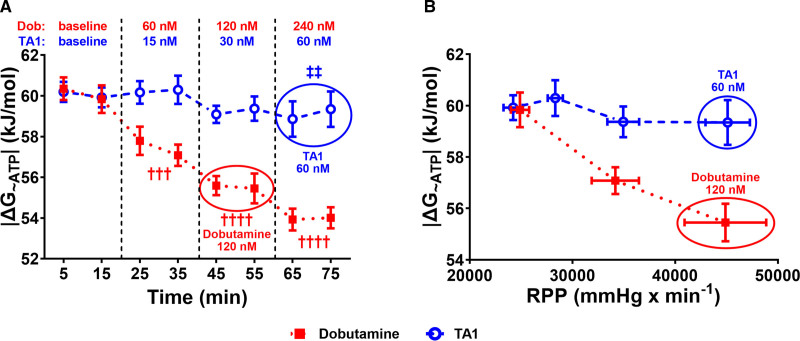Figure 5.
TA1 preserves while dobutamine (Dob) depletes the free energy of ATP hydrolysis (|ΔG~ATP|).
A, Absolute value |ΔG~ATP| progressively declined with Dob increments and was preserved by TA1. B, Plotting |ΔG~ATP| against rate-pressure product (RPP) expresses the combined effect of TA1 or Dob on cardiac energetics and contractile function. TA1 preserved |ΔG~ATP| (A) and maintained the |ΔG~ATP|/RPP relationship horizontal compared with 120 nmol/L Dob (B) that caused decline in |ΔG~ATP|/RPP. Thus, TA1 achieved similar RPP at preserved |ΔG~ATP|. As 60 nmol/L TA1 and 120 nmol/L Dob increased RPP to the similar extent at different |ΔG~ATP|, their effects are circled in both A and B. In B, the Dob concentrations from left to right are Dob-zero baseline, 60 nmol/L, and 120 nmol/L, and the TA1 concentrations from left to right are TA1-zero baseline, 15 nmol/L, 30 nmol/L, and 60 nmol/L. n=15 (TA1) and 11 (Dob). Data shown are mean±SEM. Averages of the 2 time point measurements per substance concentration were compared. P values were obtained by paired t tests (baseline vs incremental concentrations of Dob or TA1) and unpaired t tests (60 nmol/L TA1 vs 120 nmol/L Dob). †††P<0.001 and ††††P=0.0001 vs Dob-zero baseline, respectively. ‡‡P<0.01 vs 120 nmol/L Dob. N for all time points is provided in Table S3.

